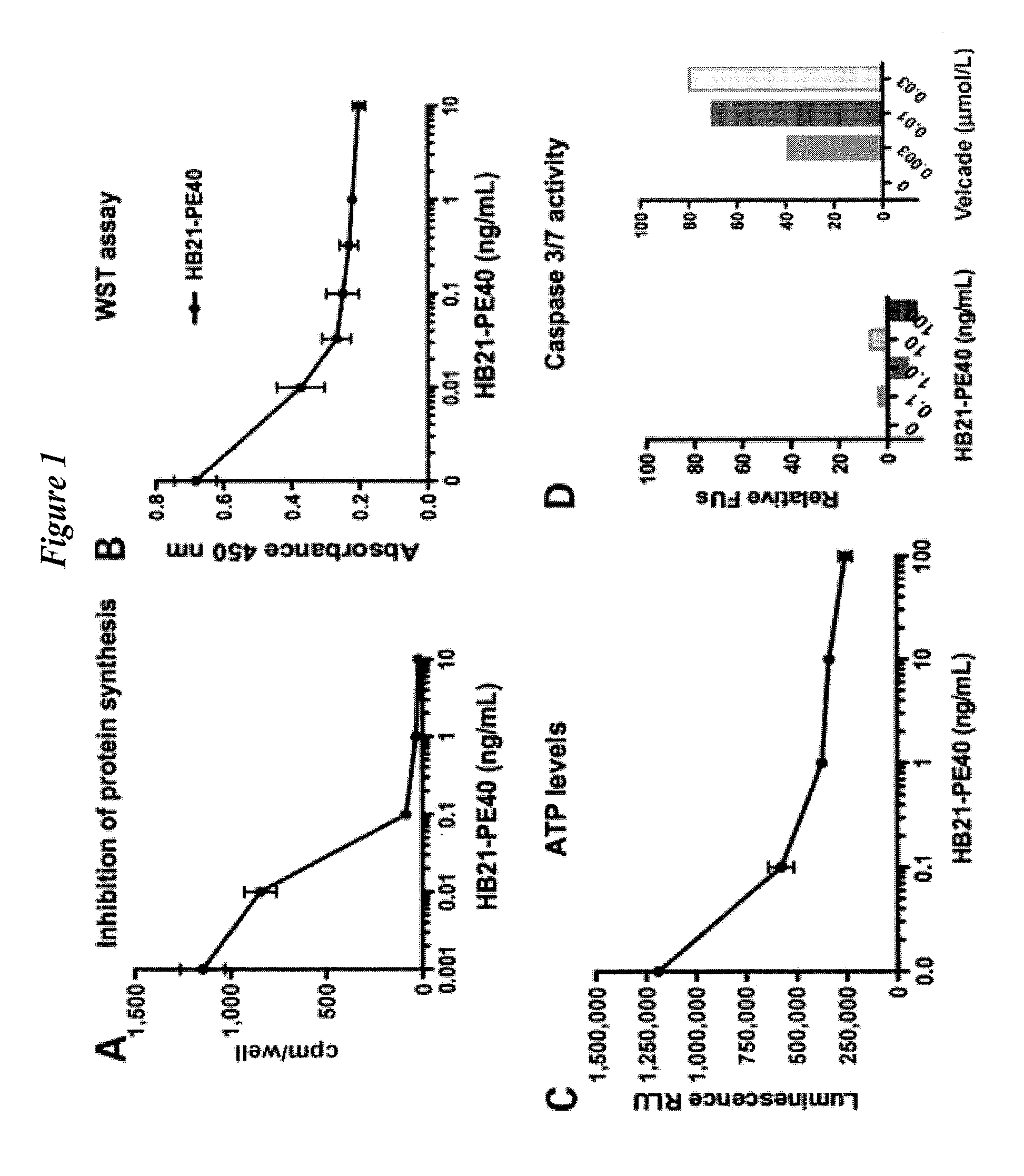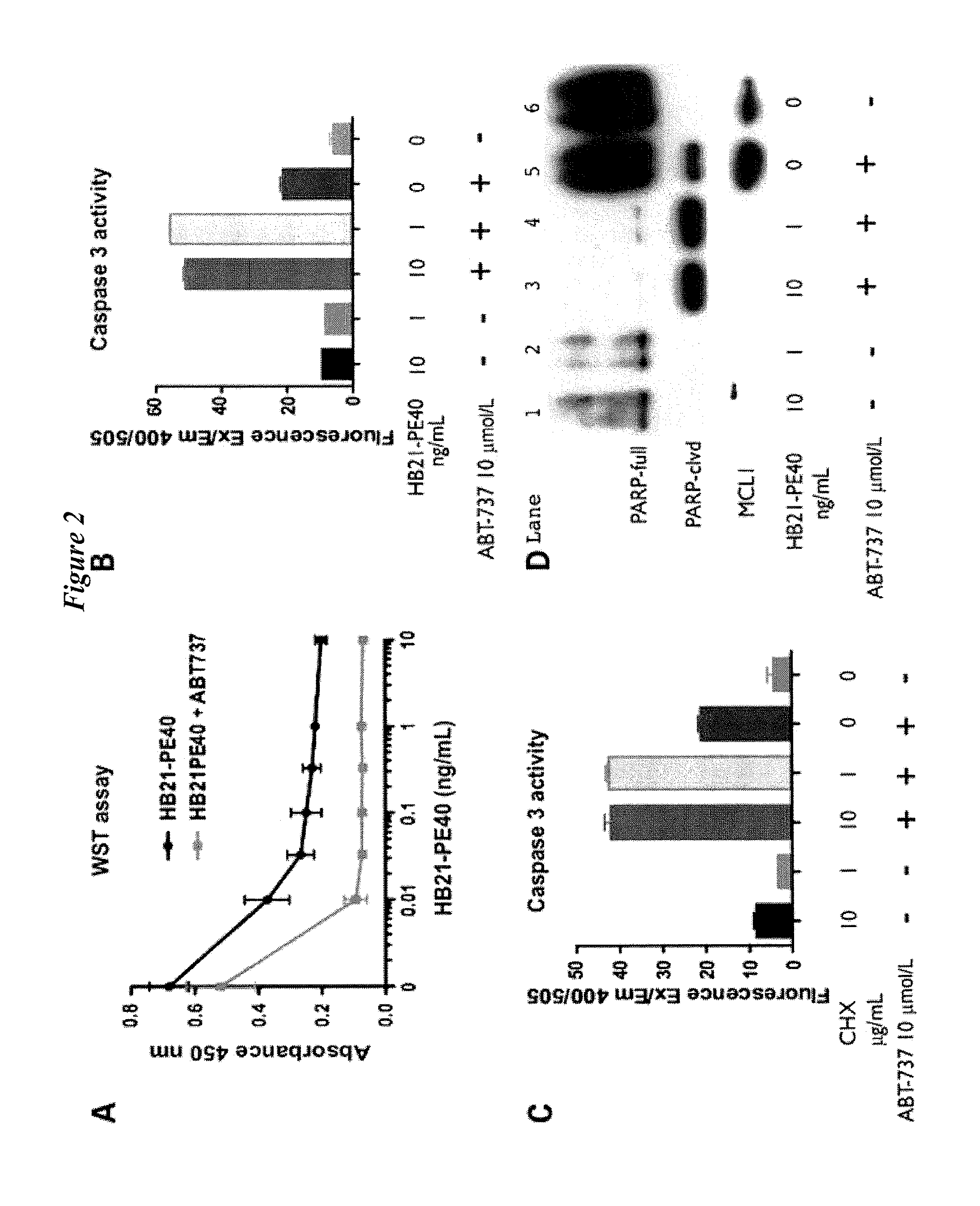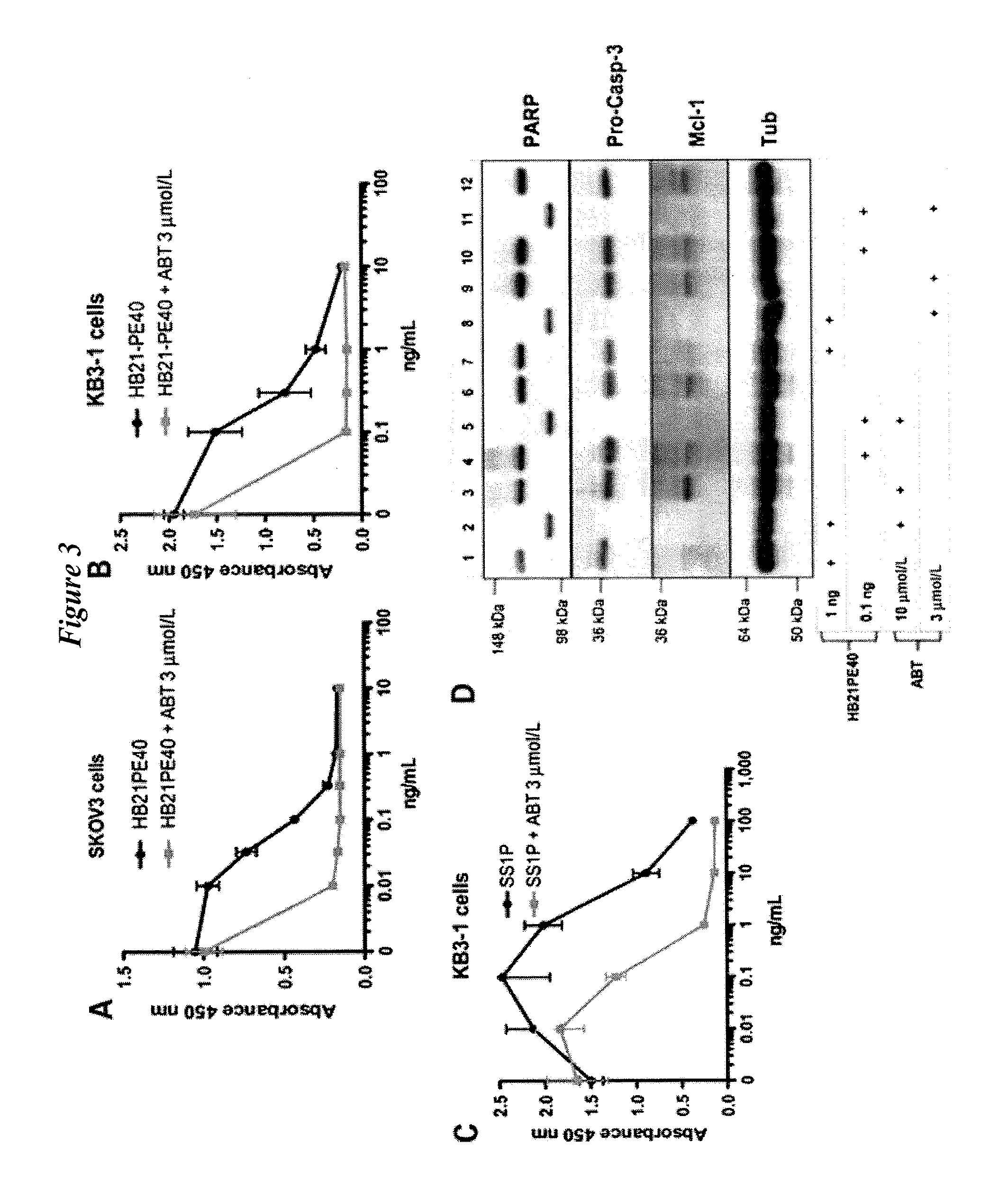Therapy with a chimeric molecule and a pro-apoptotic agent
- Summary
- Abstract
- Description
- Claims
- Application Information
AI Technical Summary
Benefits of technology
Problems solved by technology
Method used
Image
Examples
example 1
APT-737 Overcomes Resistance to Immunotoxin Mediated Apoptosis and Enhances the Delivery of Pseudomonas Exotoxin-Based Proteins to the Cell Cytosol
[0293]ABT-737 (Selleck Chemicals LLC) was dissolved in DMSO at 10 mmol / L stock concentration, and stored frozen at −20° C. ABT-263 (Toronto Research Chemicals, Inc.), was dissolved in DMSO at 3 mmol / L, and stored frozen at −20° C. Velcade (bortezomib) (NIH pharmacy). HB21-PE40 and SS1P were produced as previously described by Batra J K, et al., I. Mol Cell Biol 1991; 11:2200-5 and Hassan R, et al., Clin Cancer Res 2002; 8:3520-6). HB21-CET40 was described recently (Sarnovsky R, et al., Cancer Immunol Immunother 2010; 59:737-46). DT (List Biological Laboratories) and cycloheximide (Sigma) are commercially available.
Antibodies
[0294]PARP (BD; 556494), caspase 3 (Santa Cruz Biotechnology; 7148), Mcl-1 (Cell Signaling; 4572), tubulin (Sigma; T6074), and ATF4 (Santa Cruz Biotechnology; SC-200).
Cells
[0295]DLD1 and SKOV3, obtained from American T...
example 2
Synergy Between ABT-737 Treatment and a PE38 or PE40 in KB Adenocarcinoma Cells
[0310]FIGS. 7 to 14 illustrate the highly synergistic pro-apoptotic interaction between APT-737 treatment and PE-immunotoxin treatment as compared to the much weaker interaction observed for APT-737 treatment and cycloheximide and diptheria toxins.
example 3
[0311]BL22 and HA22 are variants of the same basic immunotoxin targeted to CD22 on B-cell malignancies. The effects of these agents on Raji cells are shown in FIGS. 15 to 17. The intensity of staining for Annexin V is shown on the X-axis. Annexin V binds to phosphatidylserine. Dying cells that undergo apoptosis display phosphatidylserine, on their cell surface. Phosphatidylserine is normally found on the cytosolic surface of the plasma membrane, but is redistributed during apoptosis to the extracellular surface. The y axis shows staining with a dye 7-AAD that is normally excluded from living cells. When cells die, they take up the dye. Cells that are positive only for Annexin staining are deemed “early” apoptosis. Cells that are positive for Annexin and 7-AAD are in “late” apoptosis. Cells that are positive for 7-AAD but negative for Annexin are considered dead—but with an unknown mechanism. FIG. 15 shows that little or no apoptosis is mediated by ABT-263 alone. FIG. 16 shows that t...
PUM
 Login to View More
Login to View More Abstract
Description
Claims
Application Information
 Login to View More
Login to View More - R&D
- Intellectual Property
- Life Sciences
- Materials
- Tech Scout
- Unparalleled Data Quality
- Higher Quality Content
- 60% Fewer Hallucinations
Browse by: Latest US Patents, China's latest patents, Technical Efficacy Thesaurus, Application Domain, Technology Topic, Popular Technical Reports.
© 2025 PatSnap. All rights reserved.Legal|Privacy policy|Modern Slavery Act Transparency Statement|Sitemap|About US| Contact US: help@patsnap.com



